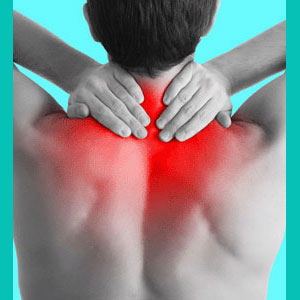
A herniated disc C7-T1 is a fairly common place to experience a bulging disc and considerable deterioration of the overall intervertebral structure. This area marks the frontier between the cervical spine and the thoracic spine and is actually a strong and resilient intervertebral level. However, the region endures a tremendous amount of wear and tear over its lifetime and can succumb to the pressure of degeneration or injury in many people.
Herniations at C7/T1 can result from trauma or be facilitated through normal spinal disc degeneration. As in all cases of intervertebral abnormality, herniations which occur at C7/T1 are unlikely to enact symptoms, even if the bulge is significant, unless they definitively compress a neurological structure, such as a nerve root or the actual spinal cord itself.
This essay will focus on describing intervertebral disc irregularities at the cervicothoracic level of C7/T1.
What is a Herniated Disc C7-T1?
This intervertebral level is also called the cervicothoracic junction. It marks the boundary between the neck, also called the cervical spine, and the upper back, known as the thoracic spine. Due to the anatomy of the vertebral column, the cervical levels just above C7/T1 suffer most of the wear and tear and are called upon to bend and flex far more often. This makes C7/T1 slightly more resilient to degenerative changes and definitely more resistant to most injuries.
However, herniations can occur here and may bring on severe symptoms in rare instances of definitive nerve compression or chemical irritation.
Disc Bulge C7-T1 Presentation
C7/T1 injuries are most common when extreme trauma is present, such as in the case of a car accident or severe fall. However, when stressed, the smaller, lighter vertebrae and spinal discs above this level will most commonly fail before C7/T1. During particularly bad damaging events, multiple disc injuries may be enacted, typically at C5/C6, C6/C7 and C7/T1.
Foraminal stenosis is a slightly more common diagnosis here than spinal stenosis and is also actually the source of pain in most structural injuries. In these cases, the pain can exist in the affected arm and may be especially present in the knife-edge side of the hand and the pinky finger.
It should be noted that when stenosis does occur at C7/T1, symptoms may be severe, due to the natural curvature of the central canal at this location and the fact that a central herniation will likely impart considerable force against the spinal cord.
Herniated Disc C7-T1 Guidance
C7/T1 herniations are not the common scapegoats used to explain neck and upper back pain like many of the other cervical levels are. However, if one is present, it is likely to be a major consideration as the underlying reason for symptoms. However, like other herniations, it is likely to be completely innocent and coincidental to the pain in the majority of diagnosed patients, unless a proven pathological component can be ascertained during the diagnostic process.
When central or foraminal stenosis are obvious, the diagnosis may be correct, if the expected symptoms correlate exactly. However, according to clinical research data, this is rarely the case and most mild to moderate C7/T1 herniations are not problematic in any way.
Herniated Disc > Herniated Disc Injury > Herniated Disc C7-T1




